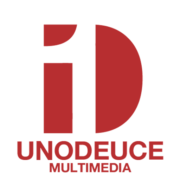Smart Ways Small Businesses Can Survive Rapid Growth
You didn’t expect it to happen this fast. Orders are flying in, new clients keep knocking, and your two-person team now needs to manage twelve. Growth is supposed to feel like winning, right? But when it barrels in all at once, it can feel like trying to fly a kite in a wind tunnel. Sudden success doesn’t guarantee long-term stability; it merely raises the stakes. If you’re a small business owner facing rapid expansion, the way you react in these moments could make or break what you’ve built.
Rework Your Money Habits
The adrenaline of rapid growth can mask dangerous blind spots in your finances. Suddenly, you’ve got payroll for ten people instead of two, suppliers need deposits upfront, and taxes—good grief, the taxes. You’ll need to streamline your financial management approach so your cash flow doesn’t outpace your cash clarity. That might mean hiring a bookkeeper or leaning harder into real-time accounting software, but the bottom line is this: you can’t afford to wing it anymore. Budgeting should be done every week, not monthly. If the numbers don’t talk to you, find someone who can translate them before things spiral.
Shift the Org Chart Before It Collapses
Growth exposes weak spots in your structure. The chain of command you started with probably made sense when your office was just a kitchen table, but now it needs to be stress-tested. Avoid waiting for chaos to erupt—adjust your company structure strategically while you still have control over it. Think in terms of roles, not people, and map out who does what, where the overlaps are, and which hats need to be passed on. If communication is slow or tasks fall through the cracks, that’s a red flag, not a growing pain. Tweak the chart, assign accountability, then over-communicate the changes.
Decide What You Shouldn’t Be Doing
Here’s the hard truth: You can’t keep doing everything. One of the first things to outsource should be non-core operational tasks that can be handled by external providers, such as payroll, customer service, or even parts of your marketing. These tasks eat time and often fall outside your team’s sweet spot. Outsourcing them can free up your energy for the things only you can do: building culture, closing deals, and shaping vision. You’ll still steer the ship, but you’re not patching sails in the middle of a storm. Delegating isn’t defeat; it’s a strategy.
Invest in Your Business Brain
No matter how scrappy and instinctive your leadership style is, you’ll need a sturdier foundation as your business grows. Earning a business management bachelor’s degree can build your skills in leadership, operations, and project management, giving you a sharper edge. A formal program also forces you to think long-term, rather than just reacting to the next crisis. Pursuing an online degree can make this kind of education more flexible and accessible, especially when your schedule is chaotic. You’ll gain frameworks, not just theories, and find yourself recognizing patterns you used to miss.
Say It So Everyone Hears It
Growth multiplies confusion if you’re not careful. Internal miscommunication can derail even the best-laid plans, especially when your team expands faster than your systems can support. You must take deliberate steps to improve internal communication so that your people are informed about what’s happening and why. That doesn’t mean more meetings; it means better tools, more precise language, and ensuring that folks at the edge of your operation feel as looped in as the core team. Create routines that support clarity, not just noise. The goal is trust and efficiency, not endless Slack threads.
Your Customers Already Know You—Don’t Forget Them
It’s tempting to chase the shiny new prospects during a growth spurt. But don’t forget to prioritize already existing customers who helped you get here in the first place. These are the individuals most likely to refer others, provide honest feedback, and remain committed during challenging times. Keep them close, reward their loyalty, and don’t let service quality dip just because you’re scaling. A thoughtful email, a loyalty bonus, or a simple thank-you call goes further than you think. Ignore them, and you risk trading steady income for short-term wins.
Revisit Your Marketing Strategy
Rapid growth is an ideal time to reassess your marketing efforts. What attracted your initial customers may not suffice for a broader audience. Consider enhancing your strategy with video marketing, which can boost engagement and convey your brand’s story more effectively. Collaborating with professionals like UnoDeuce Multimedia can help craft compelling video content that resonates with your target market. Their expertise in storytelling ensures your message is both authentic and impactful.
Is Your Business Built to Stretch?
Just because your business is growing doesn’t mean it’s ready to scale. You’ve got to ask yourself: Is your infrastructure ready to scale when demand doubles again next quarter? That means your technology, your processes, and yes, your people. If one bottleneck brings everything to a halt, you’re not scaling; you’re sprinting on sand. Identify stress points now before they break under pressure. Planning for scale isn’t about predicting the future; it’s about not being caught flat-footed by it.
Sudden success isn’t a straight line up; it’s a stress test. The decisions you make now, while the adrenaline’s high, will either turn growth into a launchpad or a cautionary tale. There’s no shame in slowing down just enough to think things through. Surround yourself with more intelligent systems, sharper advisors, and a team that can move with you, not just for you. Grow with intention, not ego. That’s how you survive success and turn it into something sustainable.
Discover the power of storytelling with UnoDeuce Multimedia and see how they can bring your brand’s vision to life through captivating video content!










